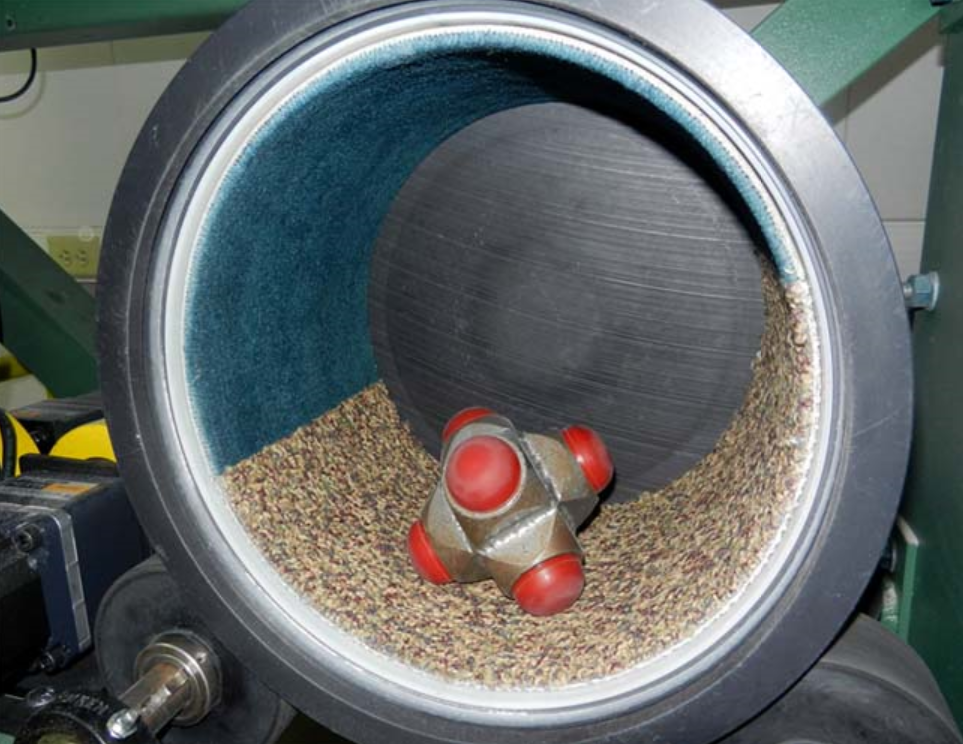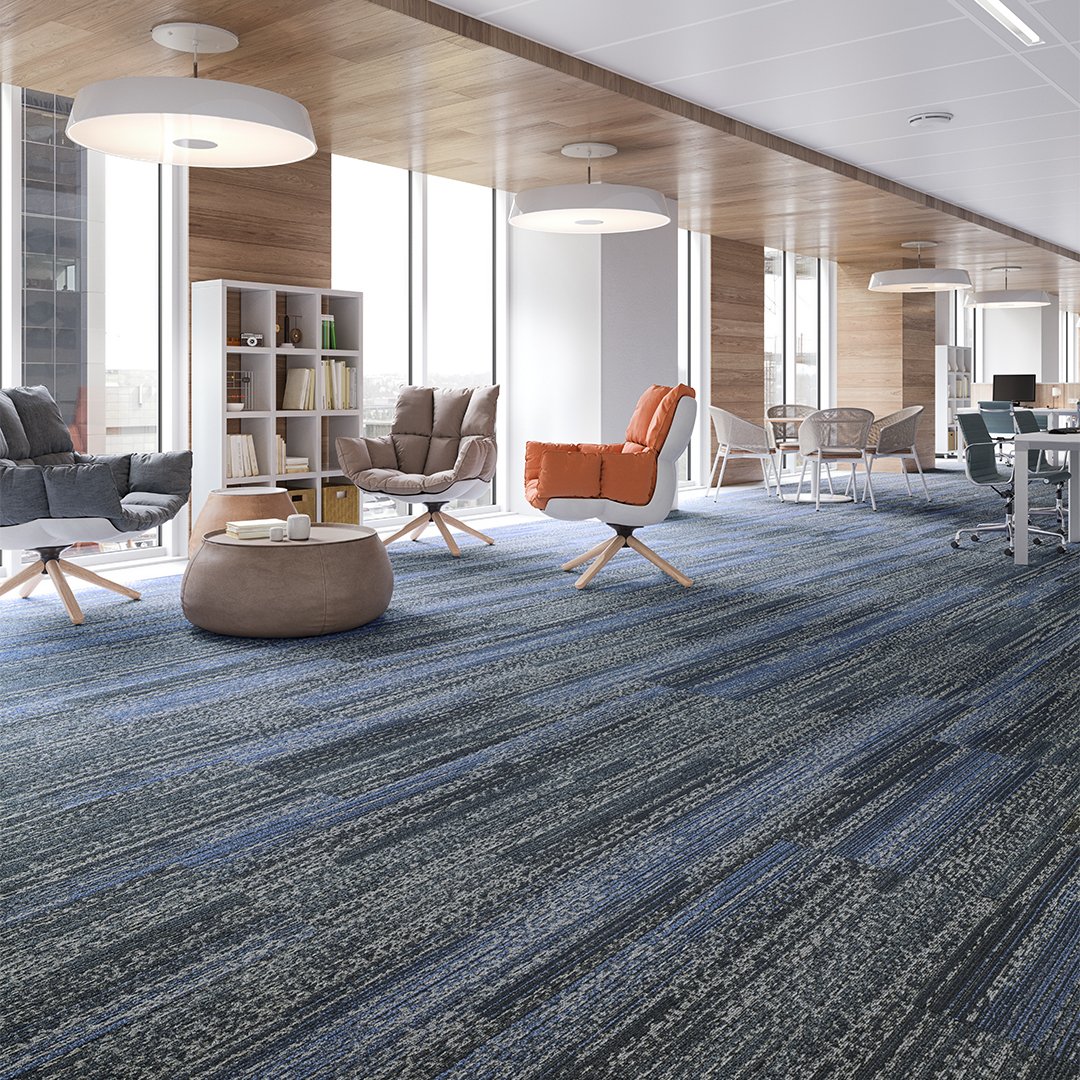When looking at specifications for carpets, most manufacturers will indicate a TARR rating of the carpet. These ratings will help you choose the right carpet to install in the space you’re designing.
As a flooring manufacturer for over 100 years, we at Mannington Commercial hold our carpets to a high standard of performance, which helps our designers feel confident when they choose a carpet from our line that it will stand the test of time.
We know selecting carpet isn’t an easy choice, but we pride ourselves on our high TARR. At Mannington Commercial, our commercial carpets come with a TARR rating of 3.0 or greater, with the hopes that once you nail down a design aesthetic, performance is something that’s just built in.
You might find yourself asking, what is TARR anyway? In this article, we will help you understand what these ratings mean and why they are important to the flooring choices you make.
What Is A TARR Rating?
TARR (texture appearance retention rating) is meant to give you a better understanding of how well a specific carpet should perform in certain spaces based on the amount of foot traffic expected in that area. It measures the level of appearance change of a specific carpet after foot traffic.
In other words, the TARR will help you understand the durability and performance of the carpet you are specifying. For example, a low TARR-rated carpet in a high traffic area like a lobby or corridor might look plush when initially installed but will get crushed and wear down over time.
TARR is a third-party system developed by the Carpet and Rug Institute (CRI) through a consensus process involving technical experts in the carpet industry and commercial and government specifiers.
The ratings are established through simulation wear tests and are based on a 12,000-cycle hexapod exposure conditioning test. The simulation is performed by securing a carpet to a backing sheet that is mounted inside a rotatable drum with the pile surface of the carpet exposed.

Metal hexapod inside rotating drum
A metal hexapod, with six polyurethane studs, rolls randomly on the pile surface inside the rotating drum for 12,000 revolutions.
The resulting change in appearance is rated on a numbered scale from 1 to 5, with 5 representing no change in appearance, and 1 representing a severe change.
The higher the TARR, the longer the carpet will retain its original appearance. For example, carpet with a 4.0 TARR will retain its original new texture appearance longer in various traffic conditions than carpet with a 3.0 rating.
These ratings take into account the total of the carpet and not just how the face fiber will perform, but they do not reflect any other variables such as staining, maintenance and poor installation.
Carpet backing can play a part in the overall TARR of carpet, as well. While it can make a small difference, industry tests have shown that cushion backing can absorb some of the impact from foot traffic leading to a longer lasting texture appearance.
There are three basic categories for TARR based off of 12,000 cycle hexapod:
- Moderate, which needs a carpet with TARR greater than or equal to 2.5
- Heavy, which needs a carpet with TARR greater than or equal to 3.0
- Severe, which needs a carpet with TARR greater than or equal to 3.5

The Challenge of Measuring Foot Traffic
Because all foot traffic is not equal, it is difficult to quantify foot traffic for these ratings. For example, foot traffic from workers wearing heavy boots is not the same as foot traffic from business shoes. And traffic in a casino or airport has more rolling loads and is in a more condensed period of time than, say, a small office building.
Therefore, CRI developed a fact sheet including a model specification process that categorizes areas of use and minimum TARR for each particular end-use, so that you know what type of TARR to use in each application.
Private offices, sleeping rooms, and some administrative areas are generally rated as moderate use, while conference rooms, open offices, and classrooms are generally rated as heavy use. Severe use is generally described as spaces such as corridors, entrances, and public areas. The traffic level application chart tells you the minimum rating you should look for in a carpet for that end-use.
While there can be variables that affect the end use and level of foot traffic, it is important to use the right TARR rating for the right end use. Using carpet that does not meet the minimum guidelines for your space can result in significant wear and a shortened life cycle of your investment.
Additionally, if you place a low TARR carpet in a heavy or severe traffic area, it is possible to void the manufacturer’s warranty. We would be remiss in not telling you that proper maintenance of your carpet can affect the lifespan of your carpet and its overall appearance throughout the lifecycle.
See our recommendations for proper carpet maintenance.
How Carpet Design Affects TARR
Design can affect TARR as well. For example, tip-sheared products will not hold up well under heavy traffic, and as such are not recommended for heavily traveled areas such as corridors. Loop products maintain their looks much better than tip-sheared products in heavily traveled areas.
Mannington’s VP of Commercial Design, Roby Isaac, believes it’s possible to get the best of both worlds: a high TARR rating and a fabulous design.
He suggests a high-quality fiber, like Antron®, that performs well against crushing and matting (two points of evaluation for TARR). Premium fibers are especially important to consider if the carpets are designed to be used in heavily trafficked areas. However, this does not mean that other fiber systems cannot perform well. As seen in Antron vs. ECONYL® there are many other factors involved in TARR.
Construction also plays a large part in getting a good TARR rating. At Mannington Commercial, our design team is deliberate about the pile heights used, the percentage of loop versus tip-shear areas and how color is used in specific areas of the product.
Pairing the product construction with the correct backing is also important. Again, the surface appearance is what is being evaluated for TARR, but depending on the type of backing you choose, it can help to absorb impact that is put on the surface and extend the intended visual for a longer period of time. Backings, and backing adhesive, contribute to tuft bind strengths and, ultimately, better stability of the product.
When designing carpets, Roby and his team are also able to alter the product or design to achieve a higher TARR. “We would look at doing something to the pattern to either enhance or incorporate a mix of color values to create some ‘visual disruption,’” he told us. “This is a bit of a balancing act, because we don’t want to modify the pattern too much and make it feel completely different from the original pattern.”
In addition to creating that “disruption” in the pattern, Roby shared that his team might adjust pile heights if that is contributing negatively to the test rating, meaning they might be contributing to crushing.
Conversely, the design team might have to increase the pile in areas if it’s too low and has the appearance of things like grinning, which is when the spaces between the loops of the fiber open up and reveal the backing.
However, such adjustments are a balancing act. If the pile height is changed, other things like stitch rate or machine settings would need to be adjusted as well to correspond to those modifications. Ultimately, performance becomes the driver at that stage of development.
TARR Standing the Test of Time
Now that we have explored the importance of TARR, we hope this helps to eliminate guesswork and provides guidance for determining which carpet is best equipped for your end-use application.
We understand that as a designer there’s a lot more to take into consideration beyond just how the flooring looks. If the expectation is that the carpet you choose is going to last and retain its appearance for years to come, then choosing a carpet with a 3.5 rating or greater is the best choice.
View our performance pages.


.jpg?width=1080&name=TheHocus_Maquette_SaturnMilk_81465_RoomScene%20(1).jpg)